#Fpga
Explore tagged Tumblr posts
Text
Finally bit the bullet on picking up a MISTer pi! Gonna 3d print a case!!!
30 notes
·
View notes
Text

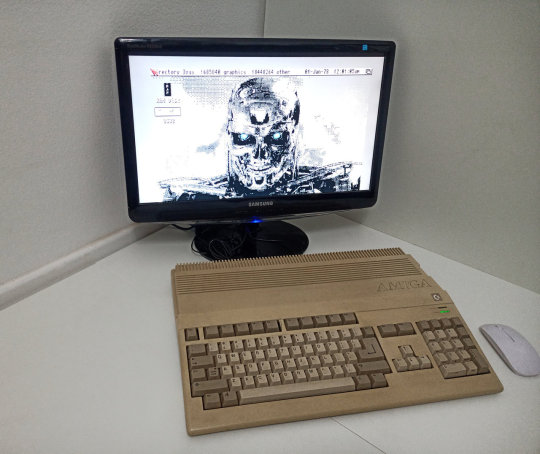

UNAmiga FPGA - Updating AmigaOS and Tools…
192 notes
·
View notes
Text
Checklist on getting the N64 MisterFPGA core running (after searching a lot in the forums, myself)
Delete any .cfg files.
Make sure that you have the latest version of the core.
Make sure that you have the latest version of N64-database.txt.
Make sure that you have the N64 BIOS. You can get the BIOS from the MAME 0.260 non-merged ROMset. The BIOS is the .bin file in the .zip file of your choice.
Rename your choice of BIOS to boot.rom. (Remember to change the extension, not just the name.) Any additional BIOS would be renamed boot1.rom and boot2.rom if included.
Put the BIOS where the N64 core would be.
Place the BIOS in the folder where the N64 ROMS are if you are still having trouble.
Place the N64-database.txt file in the folder where the N64 ROMS are if you are still having trouble.
Locations of the BIOS files in the ROMset
The Nipponese BIOS is pifdata.bin in n64dd.zip.
The American BIOS is pifntsc.bin in n64.zip.
The European BIOS is pifpal.bin in n64_pal.zip.
Note: n64, v64, and z64 ROMS all work.
#N64_MiSTer#MiSTerFPGA#N64#Nintendo 64#emulation#FPGA gaming#FPGA#N64 emulation#Nintendo 64 emulation#MiSTer FPGA#MiSTer FPGA cores
4 notes
·
View notes
Text
Raspberry Pi 5 vs. AXON: A Comprehensive Comparison for 2025
As the landscape of single-board computers (SBCs) evolves, enthusiasts and professionals are presented with a plethora of options tailored to diverse applications. Among the frontrunners are the globally recognized Raspberry Pi 5 and the India-based AXON by Vicharak. This detailed comparison aims to shed light on their specifications, capabilities, and ideal use cases.


Twice the power. Same ARM heritage.
Connect with Vicharak
Stay updated with the latest offerings and innovations:
Website: https://vicharak.in
LinkedIn: Vicharak on LinkedIn
Twitter: @vicharak_in
Instagram: @vicharak.in
Facebook: Vicharak
Store Link : https://store.vicharak.in
2 notes
·
View notes
Text
AMD Versal AI Engine: Powering Next-Gen Intelligence

What is Versal AI engine?
The Versal Premium line, which integrates AI Engines, has exceptional adaptive signal processing capability and is designed for the most demanding compute and data transportation applications in wired communications, data center computation, test and measurement, and aerospace and military.
Versal AI Engine
The AI Engine Array Interface may be configured with to the AMD LogiCORE AI Engine IP. Through tiles included in the AI Engine Array Interface, this array is linked to both the Network on Chip and the programmable logic (PL). This IP specifies the clock controlling the AI Engine array and permits the definition of the number of AXI4-Stream and memory-mapped AXI interfaces with their corresponding width and orientation.
Key Features and Benefits
AXI4 configuration interfaces that are memory mapped.
AXI4 master interfaces that are memory mapped.
AXI4-Stream master and slave interfaces having 32, 64, or 128 bit data widths that may be adjusted.
Fast streams may be enabled by choosing to enable registered interfaces.
Programmable logic (PL) stream clocks automatically associate.
Designing AMD Versal AI Engine
Image Credit To AMD
AMD Developing Versal AI Engine with Vitis Model Composer AMD With Vitis Model Composer, algorithms designed for Versal AI Engines may be quickly simulated, explored, and coded from inside the Simulink environment. This may be accomplished by importing kernels and data-flow graphs into Vitis Model Composer as blocks and adjusting the block GUI parameter to control the behavior of the kernels and graphs, or by utilizing the AI Engine library blocks.
Additionally, the tool lets you use a combination of AI Engine and programmable logic (HDL/HLS) blocks to create and simulate a design. By seamlessly integrating Vitis Model Composer AI Engine blocks with Simulink source and sink blocks, simulation results may be viewed.
For usage in the Simulink environment, Vitis Model Composer offers a collection of blocks that are optimized for speed. These consist of:
AI Engine blocks
Image Credit To AMD
Comprises a collection of intricate AI Engine DSP building elements pertaining to mixers, FIR, FFT, and DDS.
includes blocks for importing graphs and kernels that may be directed to Versal devices’ AI Engine section.
HLS (Targeting PL and generates HLS code)
Targeting PL and producing HLS code, HLS provides preset blocks that contain bit-wise operations, logic, linear algebra, and math functional blocks.
Block the import of HLS kernels that are intended for Versal devices’ PL section.
HDL (Produces RTL code and targets PL)
Blocks for modeling and synthesizing DSP, arithmetic, and logic components on an FPGA
contains a FIR Compiler block that targets the Versal design’s specific DSP48E1 and DSP48E2 hardware resources.
Blocks that facilitate communication between the AMD HDL blockset and the AI Engine.
Unleash DSP Compute with AMD Versal AI Engines
For next-generation DSP workloads, speed up demanding high-performance DSP applications.
AMD Versal AI Engine Technology Enables High-Performance Digital Signal Processing (DSP) Requirements
Clients developing next-generation DSP applications need enormous computational power, which conventional FPGA designs cannot effectively provide. Large quantities of DSP blocks and programmable logic resources may be used by compute-intensive DSP applications like FIR, FFT, and General Matrix Multiply.
The total computation capability that conventional programmable logic devices may provide may be greatly diminished by this need. For demanding DSP workloads with stringent power constraints, just expanding the number of DSP blocks and programmable logic available is not a scalable solution.
In these situations, Versal AI Engines are intended to provide a more effective computing solution.
Boost Compute and Use Less Power
Optimize performance and transform your DSP designs.
Did you know that you may increase scalability and efficiency to satisfy the growing needs of high-performance, next-generation DSP applications? Learn 5 strategies to improve your DSP designs using AMD Versal AI Engines.
Access Benchmarks Comparing Versal AI Engines to Previous Programmable Logic Technology
Please get in touch with sales or your FAE for test results and source designs for head-to-head benchmark comparisons between designs that use just Programmable Logic and adaptable SoC + AI Engine designs that use AMD Versal adaptable SoCs.
Get Started with Versal AI Engines for DSP
Increase DSP compute density for the next generation of demanding DSP workloads by speeding up the most demanding high-performance DSP applications.
Read more on govindhtech.com
#AMDVersalAIEngine#PoweringNextGenIntelligence#AIEngine#FPGA#AMDVersal#KeyFeatures#AMD#DesigningAMD#AIEngineblocks#DSPCompute#technology#technews#news#govindhtech
2 notes
·
View notes
Text
Beginner's learning to understand Xilinx product series including Zynq-7000, Artix, Virtex, etc.
Xilinx (Xilinx) as the world's leading supplier of programmable logic devices has always been highly regarded for its excellent technology and innovative products. Xilinx has launched many excellent product series, providing a rich variety of choices for different application needs.
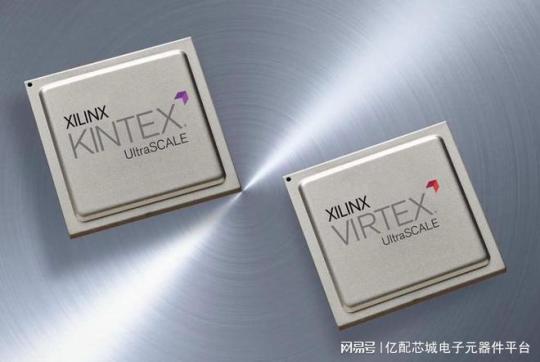
I. FPGA Product Series
Xilinx's FPGA products cover multiple series, each with its own characteristics and advantages.
The Spartan series is an entry-level product with low price, power consumption, and small size. It uses a small package and provides an excellent performance-power ratio. It also contains the MicroBlaze™ soft processor and supports DDR3 memory. It is very suitable for industrial, consumer applications, and automotive applications, such as small controllers in industrial automation, simple logic control in consumer electronics, and auxiliary control modules in automotive electronics.
The Artix series, compared to the Spartan series, adds serial transceivers and DSP functions and has a larger logic capacity. It achieves a good balance between cost and performance and is suitable for mid-to-low-end applications with slightly more complex logic, such as software-defined radios, machine vision, low-end wireless backhaul, and embedded systems that are cost-sensitive but require certain performance.
The Kintex series is a mid-range series that performs excellently in terms of the number of hard cores and logic capacity. It achieves an excellent cost/performance/power consumption balance for designs at the 28nm node, provides a high DSP rate, cost-effective packaging, and supports mainstream standards such as PCIe® Gen3 and 10 Gigabit Ethernet. It is suitable for application scenarios such as data centers, network communications, 3G/4G wireless communications, flat panel displays, and video transmission.
The Virtex series, as a high-end series, has the highest performance and reliability. It has a large number of logic units, high-bandwidth serial transceivers, strong DSP processing capabilities, and rich storage resources, and can handle complex calculations and data streams. It is often used in application fields with extremely high performance requirements such as 10G to 100G networking, portable radars, ASIC prototyping, high-end military communications, and high-speed signal processing.
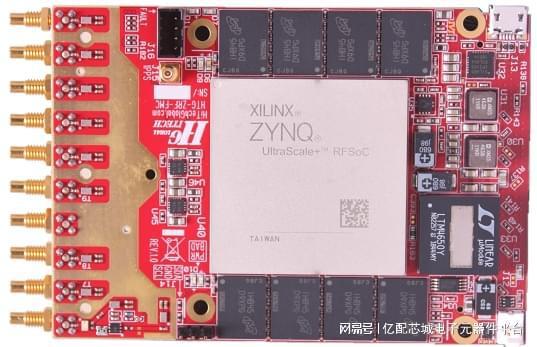
II. Zynq Product Series
The Zynq - 7000 series integrates ARM and FPGA programmable logic to achieve software and hardware co-design. It provides different models with different logic resources, storage capacities, and interface numbers to meet different application needs. The low-power consumption characteristic is suitable for embedded application scenarios such as industrial automation, communication equipment, medical equipment, and automotive electronics.
The Zynq UltraScale + MPSoC series has higher performance and more abundant functions, including more processor cores, larger storage capacities, and higher communication bandwidths. It supports multiple security functions and is suitable for applications with high security requirements. It can be used in fields such as artificial intelligence and machine learning, data center acceleration, aerospace and defense, and high-end video processing.
The Zynq UltraScale + RFSoC series is similar in architecture to the MPSoC and also has ARM and FPGA parts. However, it has been optimized and enhanced in radio frequency signal processing and integrates a large number of radio frequency-related modules and functions such as ADC and DAC, which can directly collect and process radio frequency signals, greatly simplifying the design complexity of radio frequency systems. It is mainly applied in radio frequency-related fields such as 5G communication base stations, software-defined radios, and phased array radars.

III. Versal Series
The Versal series is Xilinx's adaptive computing acceleration platform (ACAP) product series.
The Versal Prime series is aimed at a wide range of application fields and provides high-performance computing and flexible programmability. It has high application value in fields such as artificial intelligence, machine learning, data centers, and communications, and can meet application scenarios with high requirements for computing performance and flexibility.
The Versal AI Core series focuses on artificial intelligence and machine learning applications and has powerful AI processing capabilities. It integrates a large number of AI engines and hardware accelerators and can efficiently process various AI algorithms and models, providing powerful computing support for artificial intelligence applications.
The Versal AI Edge series is designed for edge computing and terminal device applications and has the characteristics of low power consumption, small size, and high computing density. It is suitable for edge computing scenarios such as autonomous driving, intelligent security, and industrial automation, and can achieve efficient AI inference and real-time data processing on edge devices.
In short, Xilinx's product series are rich and diverse, covering various application needs from entry-level to high-end. Whether in the FPGA, Zynq, or Versal series, you can find solutions suitable for different application scenarios, making important contributions to promoting the development and innovation of technology.
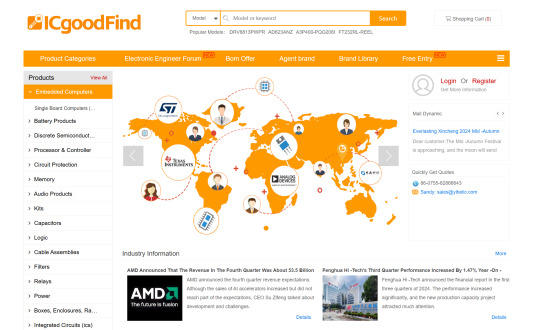
In terms of electronic component procurement, Yibeiic and ICgoodFind are your reliable choices. Yibeiic provides a rich variety of Xilinx products and other types of electronic components. Yibeiic has a professional service team and efficient logistics and distribution to ensure that you can obtain the required products in a timely manner. ICgoodFind is also committed to providing customers with high-quality electronic component procurement services. ICgoodFind has won the trust of many customers with its extensive product inventory and good customer reputation. Whether you are looking for Xilinx's FPGA, Zynq, or Versal series products, or electronic components of other brands, Yibeiic and ICgoodFind can meet your needs.
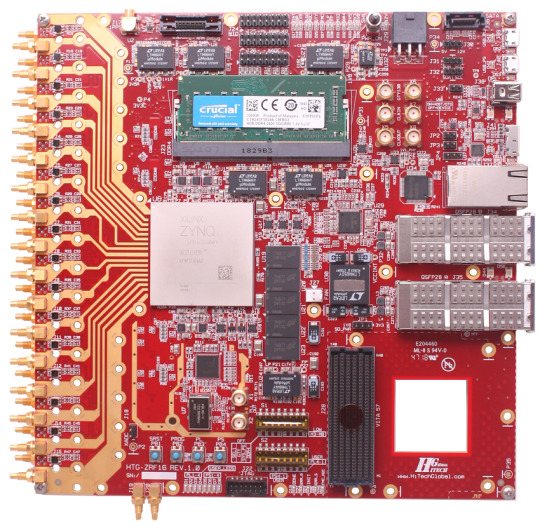
Summary by Yibeiic and ICgoodFind: Xilinx (Xilinx) as an important enterprise in the field of programmable logic devices, its products have wide applications in the electronics industry. As an electronic component supplier, Yibeiic (ICgoodFind) will continue to pay attention to industry trends and provide customers with high-quality Xilinx products and other electronic components. At the same time, we also expect Xilinx to continuously innovate and bring more surprises to the development of the electronics industry. In the process of electronic component procurement, Yibeiic and ICgoodFind will continue to provide customers with professional and efficient services as always.

4 notes
·
View notes
Text
Future Electronics to Host Future Tech Day in Hefei, China
Future Electronics, a global leader in electronics distribution, is excited to announce the upcoming "Future Tech Day" portion of the 2024 China Tech Day series—focusing on the automotive industry. The event will take place on Wednesday, September 25th in Hefei, with another session planned in Hangzhou later this year.
#Future Electronics#(SDCs)#Power#MCUs#FPGA#LCDs#Wireless#Lighting#electronic components#Capacitors#Film Capacitors#Analog#development tools#electromechanical
3 notes
·
View notes
Text
Supersega FPGA project for all Sega platforms and physical media now accepting pre-reservations
Supersega FPGA project for all Sega platforms and physical media now accepting pre-reservations #supersega #sega #genesis #dreamcast #megadrive #sms #gamegear #fpga
Although I would have liked their presentation to be clearer, for those interested in supporting the Supersega project (I wrote about it previously here and here), they posted the following information, which I translated to English: In the video, we show you the console board in operation, running several games, and we explain its components. On the website you will find two buttons for those…
#dreamcast#fpga#game gear#genesis#mega drive#megadrive#saturn#sc-3000#Sega#sega master system#supersega
2 notes
·
View notes
Text
Understanding FPGA Architecture: Key Insights
Introduction to FPGA Architecture
Imagine having a circuit board that you could rewire and reconfigure as many times as you want. This adaptability is exactly what FPGAs offer. The world of electronics often seems complex and intimidating, but understanding FPGA architecture is simpler than you think. Let’s break it down step by step, making it easy for anyone to grasp the key concepts.
What Is an FPGA?
An FPGA, or Field Programmable Gate Array, is a type of integrated circuit that allows users to configure its hardware after manufacturing. Unlike traditional microcontrollers or processors that have fixed functionalities, FPGAs are highly flexible. You can think of them as a blank canvas for electrical circuits, ready to be customized according to your specific needs.
How FPGAs Are Different from CPUs and GPUs
You might wonder how FPGAs compare to CPUs or GPUs, which are more common in everyday devices like computers and gaming consoles. While CPUs are designed to handle general-purpose tasks and GPUs excel at parallel processing, FPGAs stand out because of their configurability. They don’t run pre-defined instructions like CPUs; instead, you configure the hardware directly to perform tasks efficiently.
Basic Building Blocks of an FPGA
To understand how an FPGA works, it’s important to know its basic components. FPGAs are made up of:
Programmable Logic Blocks (PLBs): These are the “brains” of the FPGA, where the logic functions are implemented.
Interconnects: These are the wires that connect the logic blocks.
Input/Output (I/O) blocks: These allow the FPGA to communicate with external devices.
These elements work together to create a flexible platform that can be customized for various applications.
Understanding Programmable Logic Blocks (PLBs)
The heart of an FPGA lies in its programmable logic blocks. These blocks contain the resources needed to implement logic functions, which are essentially the basic operations of any electronic circuit. In an FPGA, PLBs are programmed using hardware description languages (HDLs) like VHDL or Verilog, enabling users to specify how the FPGA should behave for their particular application.
What are Look-Up Tables (LUTs)?
Look-Up Tables (LUTs) are a critical component of the PLBs. Think of them as small memory units that can store predefined outputs for different input combinations. LUTs enable FPGAs to quickly execute logic operations by “looking up” the result of a computation rather than calculating it in real-time. This speeds up performance, making FPGAs efficient at performing complex tasks.
The Role of Flip-Flops in FPGA Architecture
Flip-flops are another essential building block within FPGAs. They are used for storing individual bits of data, which is crucial in sequential logic circuits. By storing and holding values, flip-flops help the FPGA maintain states and execute tasks in a particular order.
Routing and Interconnects: The Backbone of FPGAs
Routing and interconnects within an FPGA are akin to the nervous system in a human body, transmitting signals between different logic blocks. Without this network of connections, the logic blocks would be isolated and unable to communicate, making the FPGA useless. Routing ensures that signals flow correctly from one part of the FPGA to another, enabling the chip to perform coordinated functions.
Why are FPGAs So Versatile?
One of the standout features of FPGAs is their versatility. Whether you're building a 5G communication system, an advanced AI model, or a simple motor controller, an FPGA can be tailored to meet the exact requirements of your application. This versatility stems from the fact that FPGAs can be reprogrammed even after they are deployed, unlike traditional chips that are designed for one specific task.
FPGA Configuration: How Does It Work?
FPGAs are configured through a process called “programming” or “configuration.” This is typically done using a hardware description language like Verilog or VHDL, which allows engineers to specify the desired behavior of the FPGA. Once programmed, the FPGA configures its internal circuitry to match the logic defined in the code, essentially creating a custom-built processor for that particular application.
Real-World Applications of FPGAs
FPGAs are used in a wide range of industries, including:
Telecommunications: FPGAs play a crucial role in 5G networks, enabling fast data processing and efficient signal transmission.
Automotive: In modern vehicles, FPGAs are used for advanced driver assistance systems (ADAS), real-time image processing, and autonomous driving technologies.
Consumer Electronics: From smart TVs to gaming consoles, FPGAs are used to optimize performance in various devices.
Healthcare: Medical devices, such as MRI machines, use FPGAs for real-time image processing and data analysis.
FPGAs vs. ASICs: What’s the Difference?
FPGAs and ASICs (Application-Specific Integrated Circuits) are often compared because they both offer customizable hardware solutions. The key difference is that ASICs are custom-built for a specific task and cannot be reprogrammed after they are manufactured. FPGAs, on the other hand, offer the flexibility of being reconfigurable, making them a more versatile option for many applications.
Benefits of Using FPGAs
There are several benefits to using FPGAs, including:
Flexibility: FPGAs can be reprogrammed even after deployment, making them ideal for applications that may evolve over time.
Parallel Processing: FPGAs excel at performing multiple tasks simultaneously, making them faster for certain operations than CPUs or GPUs.
Customization: FPGAs allow for highly customized solutions, tailored to the specific needs of a project.
Challenges in FPGA Design
While FPGAs offer many advantages, they also come with some challenges:
Complexity: Designing an FPGA requires specialized knowledge of hardware description languages and digital logic.
Cost: FPGAs can be more expensive than traditional microprocessors, especially for small-scale applications.
Power Consumption: FPGAs can consume more power compared to ASICs, especially in high-performance applications.
Conclusion
Understanding FPGA architecture is crucial for anyone interested in modern electronics. These devices provide unmatched flexibility and performance in a variety of industries, from telecommunications to healthcare. Whether you're a tech enthusiast or someone looking to learn more about cutting-edge technology, FPGAs offer a fascinating glimpse into the future of computing.
2 notes
·
View notes
Text
FPGA Market - Exploring the Growth Dynamics

The FPGA market is witnessing rapid growth finding a foothold within the ranks of many up-to-date technologies. It is called versatile components, programmed and reprogrammed to perform special tasks, staying at the fore to drive innovation across industries such as telecommunications, automotive, aerospace, and consumer electronics. Traditional fixed-function chips cannot be changed to an application, whereas in the case of FPGAs, this can be done. This brings fast prototyping and iteration capability—extremely important in high-flux technology fields such as telecommunications and data centers. As such, FPGAs are designed for the execution of complex algorithms and high-speed data processing, thus making them well-positioned to handle the demands that come from next-generation networks and cloud computing infrastructures.
In the aerospace and defense industries, FPGAs have critically contributed to enhancing performance in systems and enhancing their reliability. It is their flexibility that enables the realization of complex signal processing, encryption, and communication systems necessary for defense-related applications. FPGAs provide the required speed and flexibility to meet the most stringent specifications of projects in aerospace and defense, such as satellite communications, radar systems, and electronic warfare. The ever-improving FPGA technology in terms of higher processing power and lower power consumption is fueling demand in these critical areas.
Consumer electronics is another upcoming application area for FPGAs. From smartphones to smart devices, and finally the IoT, the demand for low-power and high-performance computing is on the rise. In this regard, FPGAs give the ability to integrate a wide array of varied functions onto a single chip and help in cutting down the number of components required, thereby saving space and power. This has been quite useful to consumer electronics manufacturers who wish to have state-of-the-art products that boast advanced features and have high efficiency. As IoT devices proliferate, the role of FPGAs in this area will continue to foster innovation.
Growing competition and investments are noticed within the FPGA market, where key players develop more advanced and efficient products. The performance of FPGAs is increased by investing in R&D; the number of features grows, and their cost goes down. This competitive environment is forcing innovation and a wider choice availability for end-users is contributing to the growth of the whole market.
Author Bio -
Akshay Thakur
Senior Market Research Expert at The Insight Partners
2 notes
·
View notes
Text


Firmware version 3.12a - for All Platforms: U2, U2+, U2+L, U64 and U64E2!
4 notes
·
View notes
Note
ey boss fellow fpga liker here! whats your favourite toolchain?
ayy so sorry I didn't see this a long time ago
tbqh I'm still kinda new to FPGA development, so far I've only ever worked with Lattice FPGAs using Lattice Diamond and their toolchain, which has their own synthesis engine (or you can choose to use Synplify Pro which is included for some reason), and also includes QuestaSim for simulation.
though, I did first start learning verilog using 8bitworkshop.com, they have a great IDE and it's great for beginners, but being a webapp it's RTL simulation only, so you can't even check if the code is even synthesizable.
2 notes
·
View notes
Text
Inscribing magic crystals (writing Verilog) to perform a summoning ritual (fix network interface).
5 notes
·
View notes
Text
1 note
·
View note